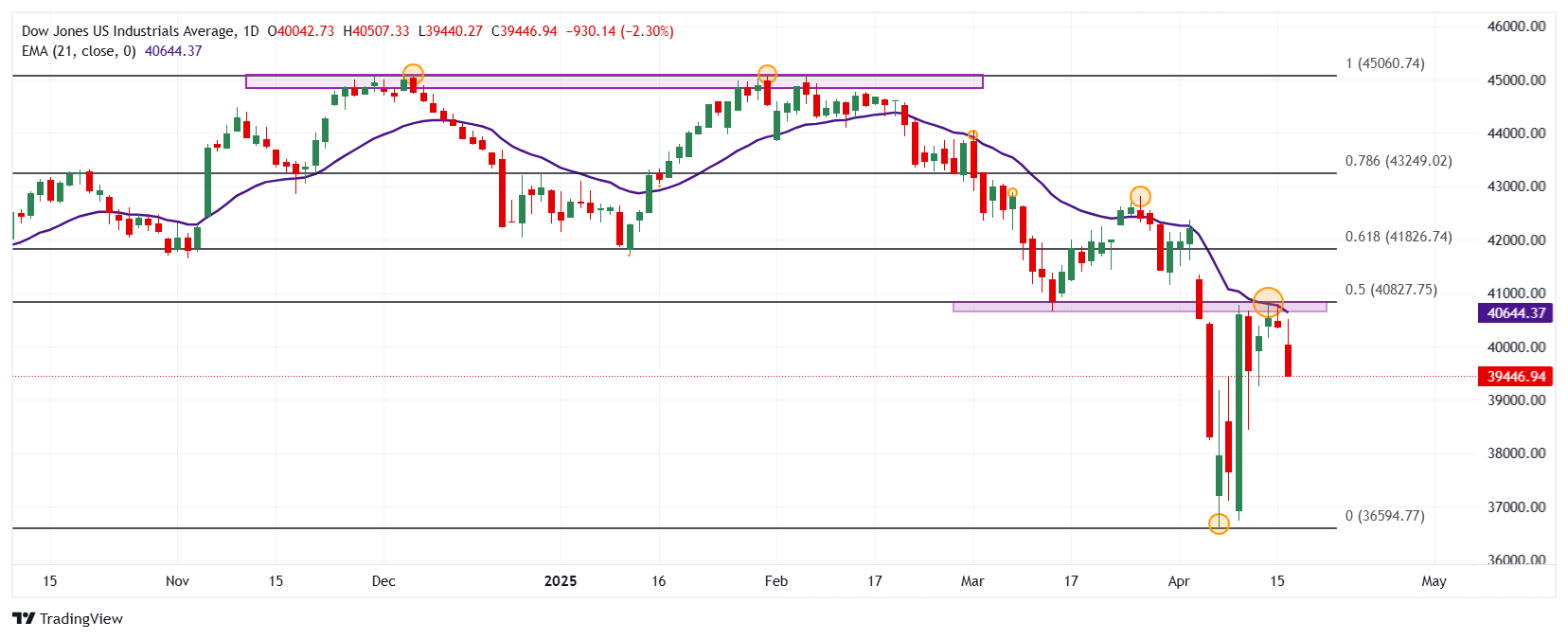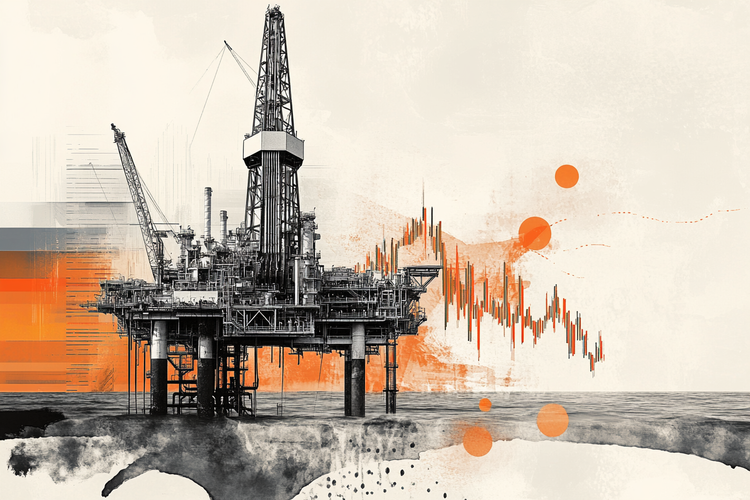- The Dow Jones loses 2.32% in the day, operating when writing at 39,447.
- The Nasdaq 100 falls 3.90% daily, dragged by Nvidia (NVDA).
- The S&P 500 goes back 3.04% today, reaching a minimum of April 11.
- The United States retail sales rise 1.4% in March, exceeding analysts’ estimates.
- The president of the Federal Reserve, Jerome Powell, acknowledged that tariff policy means greater inflation and lower economic growth.
The Dow Jones marked a maximum of the day in 40,042, where it attracted aggressive vendors that dragged the index to minimums not seen since April 11 in 39,638.
The industrial average Dow Jones opened at 40,042, while the Nasdaq 100 technological index began negotiations in 18,781. The S&P 500 began operating in 5,353, resuming the bearish trend in tune with the main stock market rates.
The Dow Jones is quote up -dragged by Amgen and Amazon
The Dow Jones index loses 2.32% daily, reaching a minimum of April 11 in 39,435.
Amgen’s shares (AMGN) fall 3.82%, operating at the moment over 283.97 $, ending with three consecutive days with losses.
In the same tune, the Amazon titles (AMZN) go back 3.60% today, currently quoting in $ 173.15, spinning three consecutive days with losses, reaching minimums of April 9 at 172.29 $.
The Dow Jones falls 929 points today, spinning two consecutive days with losses.
Nvidia Corporation takes Nasdaq 100 to negative territory
The Nasdaq 100 technological index collapses 3.90% on Wednesday, operating at the time of writing at 18,089.
Nvidia (NVDA) shares sink 10.04%, reaching a minimum not seen since April 10 in 100.45 $ after new export restrictions to China.
The president of the United States, Donald Trump, has imposed an indefinite license on NVIDIA (NVDA) for sale to China of H20 artificial intelligence chips, with immediate effect.
In the same tune, Advanced Micro Devices (AMD) titles lose 9.37% today, currently quoting about 86.40 $. This fall is presented after the requirement of export licenses for AMD GPUs that are sold in China.
The Nasdaq 100 ends with three consecutive days upwards, losing 736 points daily, being punishing for the commercial rhetoric imposed by Donald Trump to China.
The S&P 500 extends its losses after Jerome Powell’s statements
The S&P 500 signs its second consecutive day with losses, falling 3.04% today, operating at the time of writing in 5,227.
The United States retail sales presented an increase of 1.4% in March, improving the provisions of 1.3% and 0.2% observed in February. At the same time, industrial production presented a 0.3% decrease, worsening the estimated decrease of 0.2% and the increase of 0.8% observed in February.
On the other hand, the president of the Federal Reserve, Jerome Powell, acknowledged that tariffs major than expected probably mean greater inflation and lower economic growth, waiting for an increase in market volatility.
In this scenario, the S&P 500 loses 160 points, signing its second day with losses.
Technical Analysis of Dow Jones
The Dow Jones reacted down from a short -term resistance given by the maximum of April 14 in 40,774. The next key resistance is observed in 42,820 maximum of March 26, in convergence with the exponential mobile average of 21 periods. To the south, the important support is in 36,614, pivot point of April 7.
Dow Jones daily graphics

Dow Jones Faqs
The Dow Jones Industrial Avenge, one of the oldest stock market indexes in the world, consists of the 30 most negotiated values in the United States. The index is weighted by the price instead of capitalization. It is calculated by adding the prices of the values that compose it and dividing them by a factor, currently 0.152. The index was founded by Charles Dow, also founder of the Wall Street Journal. In recent years it has been criticized for not being sufficiently representative, since it only follows 30 companies, unlike broader rates such as S&P 500.
There are many factors that promote the Dow Jones Industrial Average (DJIA) index. The main one is the added performance of the companies that compose it, revealed in the quarterly reports of business benefits. The American and world macroeconomic data also contribute, since they influence investor confidence. The level of interest rates, set by the Federal Reserve (FED), also influences the DJia, since it affects the cost of credit, on which many companies depend largely. Therefore, inflation can be a determining factor, as well as other parameters that influence the decisions of the Federal Reserve.
Dow’s theory is a method to identify the main trend of the stock market developed by Charles Dow. A key step is to compare the direction of the Dow Jones Industrial Avenge (DJIA) and the Dow Jones Transportation Average (DJTA) and just follow the trends in which both move in the same direction. The volume is a confirmation criterion. The theory uses elements of maximum and minimum analysis. Dow’s theory raises three phases of the trend: accumulation, when intelligent money begins to buy or sell; Public participation, when the general public joins the trend; and distribution, when intelligent money abandons the trend.
There are several ways to operate with the DJ. One of them is to use ETF that allow investors to negotiate the DJ as a single value, instead of having to buy shares of the 30 companies that compose it. An outstanding example is the SPDR Dow Jones Industrial Avenge ETF (day). Future contracts on the DJ allow the specular operators about the future value of the index and the options provide the right, but not the obligation, to buy or sell the index at a predetermined price in the future. Investment funds allow investors to buy a part of a diversified portfolio of DJ values, which provides exposure to global index.
Source: Fx Street
I am Joshua Winder, a senior-level journalist and editor at World Stock Market. I specialize in covering news related to the stock market and economic trends. With more than 8 years of experience in this field, I have become an expert in financial reporting.







